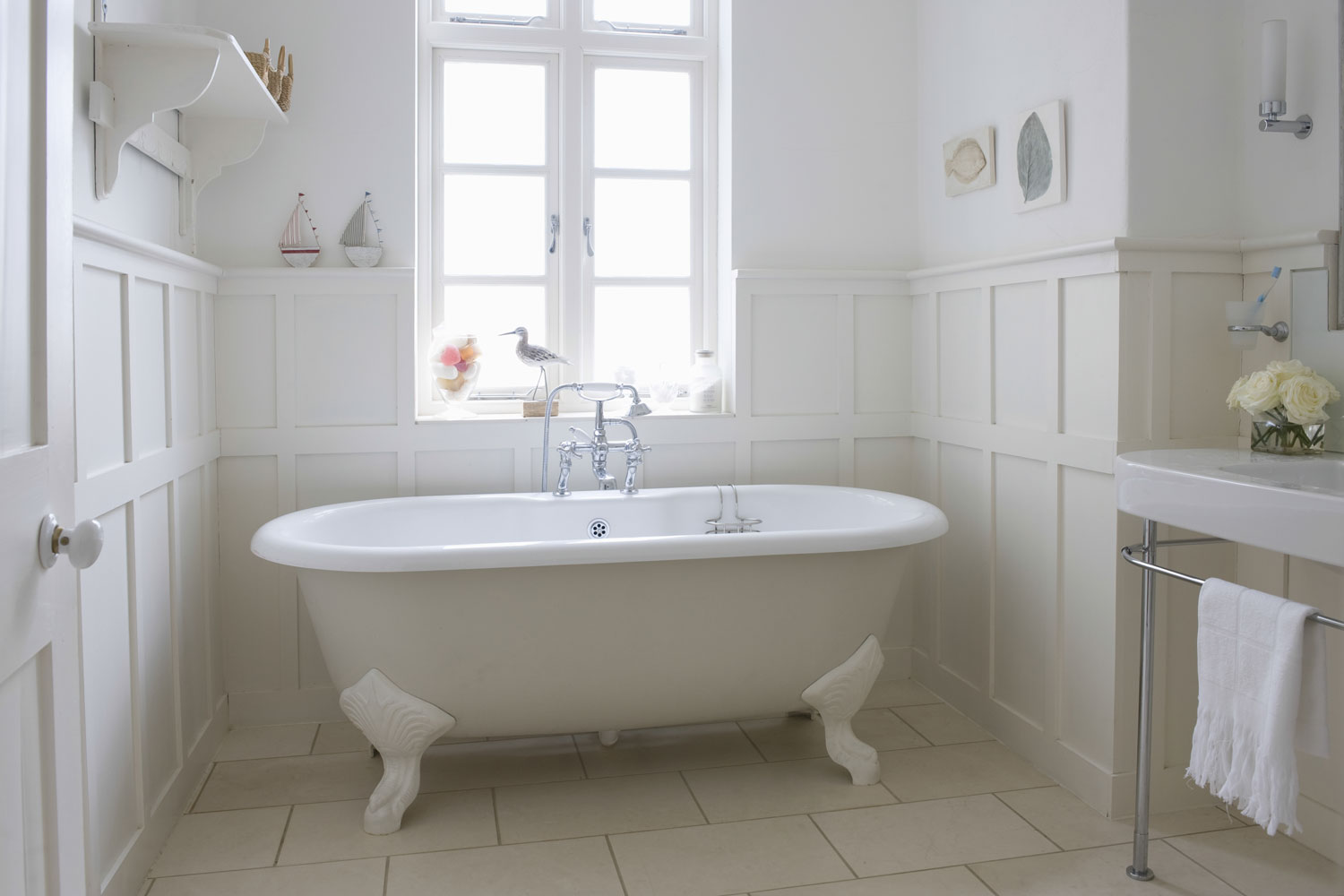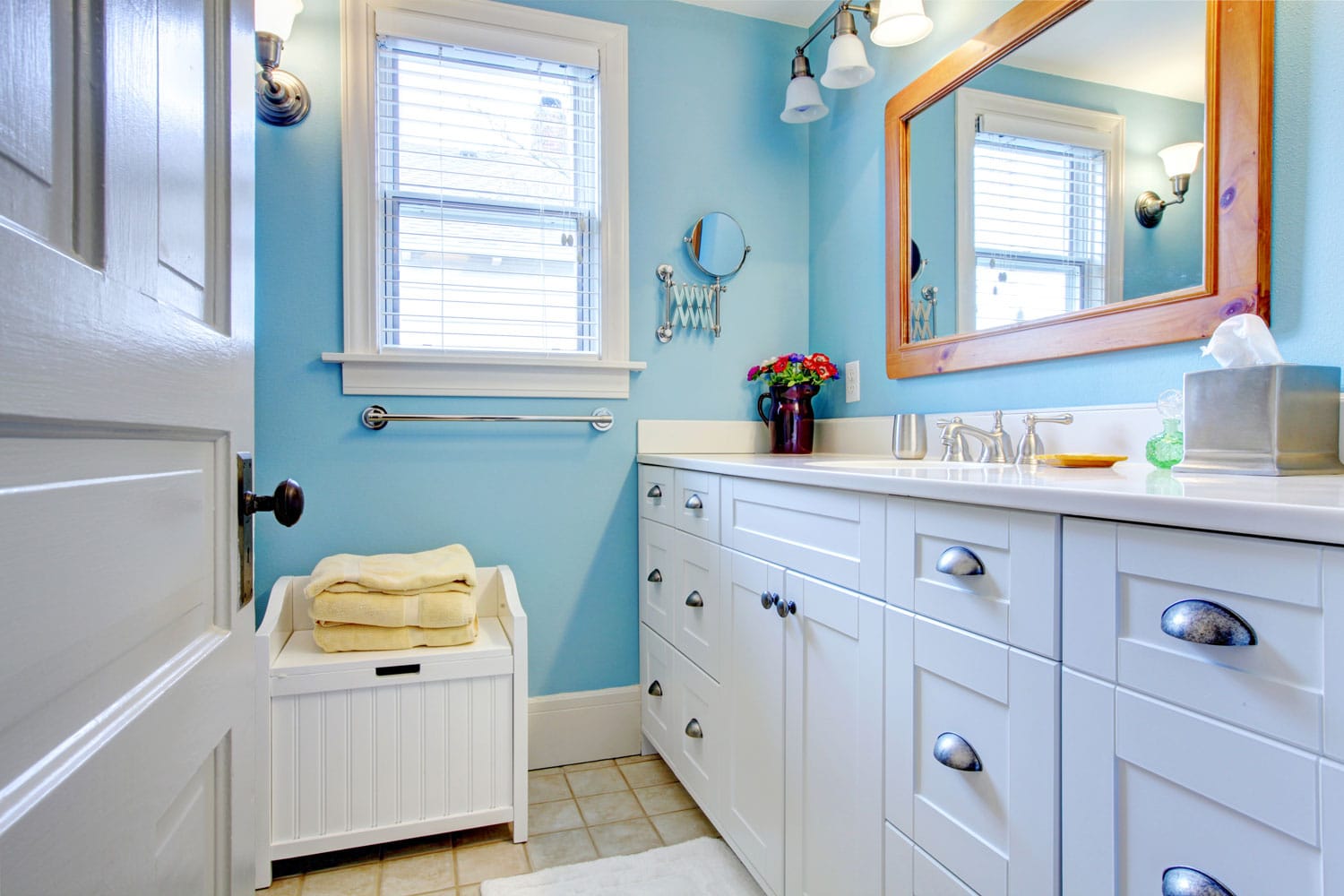Many of us have asked: should our bathroom windows be opened or closed? Before we can get to a specific answer, there are still many factors to consider, such as the amount of light being let in, safety, privacy and, of course, ventilation. Fortunately, there are practical solutions that we have researched for you.
It is best to open the window after you shower to prevent mold and mildew buildup, which grow in moist areas. If you must keep your windows closed, get an exhaust fan, a moisture absorber, an air purifier, or a dehumidifier to reduce humidity after showering.
Keeping your bathroom well-ventilated is essential to prevent health risks such as mold poisoning and to protect the bathroom's interior as well. Keep reading below if you are interested to learn more about bathroom ventilation.

How to Keep Your Bathroom Well-Ventilated
Air circulation prevents moisture from accumulating and attracting bacteria. Although you cannot always keep your windows and doors open during a shower, you can utilize your resources to keep your bathroom clean and dry.

Here are ways to keep your bathroom ventilated:
Install an Exhaust Fan
Exhaust fans or extractor fans pull the heavy air inside and expel it outward. You will need to put up the fan on an external wall and ensure that it is the correct size for your bathroom.
If your exhaust fan is too small, it may not effectively remove moisture, especially if you shower for a long time. Too big, and it may not be visually attractive to you.
Remember to run the fan every time you shower, with a 15-20 minute buffer to let the fan expel the excess moisture.
Read: "How To Insulate A Bathroom Exhaust Fan."
See this exhaust fan on Amazon.
Open Your Windows and Doors After Showering
If you are uncomfortable showering with a window open, open windows along with the door after showering. This will effectively dry out the place and prevent steam from getting trapped.
If you have a shower curtain, make sure to pull it out every week for sun-drying to remove any moisture it may have accumulated in the folds over the week.
Get a dehumidifier
Getting a dehumidifier may be costly, but it can prove to be more economical in the long run. Dehumidifiers are highly effective in collecting moisture in the air and condensing it in the reservoir, which is ideal if you produce a lot of steam.
Place it on a shelf or a dry floor to avoid damage. You can also purchase one with casters that can protect it from water puddles.
Dehumidifiers are highly recommended for spaces with no windows and proper ventilation.
See this dehumidifier on Amazon.
Wipe your mirrors and walls after showering
Droplets are inevitable when you wash or shower. This is why it is important to regularly wipe the area, including the walls, doors, and countertops which are surfaces vulnerable to splashes.
Consistently wiping off the corners and surfaces may be a hassle, but it is better than removing gunk from mineral deposits and bacteria.
Do not dry your towels inside the bathroom

Drying towels provide the perfect environment for bacteria to grow. Damp towels never fully dry in a humid area, even if you try to open a window.
This is because the damp towel also adds to the bathroom's humidity, creating a cycle that encourages microbe growth. It is best to hang your towels in a well-ventilated area where they can sun-dry.
Get an air purifier
Air purifiers can significantly improve the air quality in the bathroom. Its HEPA filter can eliminate 99% of bacteria, microbes, and mildew prevalent in humid spaces.
HEPA filters kill mold spores in its extremely dry environment, leaving your bathroom free of toxins.
If your bathroom is situated near a grilling or smoking area, air purifiers with carbon filters also absorb toxic gases such as those from cigars, grills, tobacco, and more.
Read: "How To Reset A Dyson Air Purifier [Inc. Without A Remote]."
See this air purifier on Amazon.
Utilize a Moisture Absorber
Moisture bags such as DampRid remove 60% of moisture in bathrooms. The excess moisture is trapped in the bag's sodium chloride crystals which are then liquified into a saltwater solution.
Since these packs act as a dehumidifier, you can place them in other damp areas around your home to prevent moisture buildup.
Take Cool Showers
Taking cold showers is highly recommended if you live in a humid area. Not only will it better refresh you, but the lack of excess steam can reduce the humidity in the air.
Combine taking cool showers with a humidifier or a moisture absorber, and you can effectively prevent the accumulation of toxins and bacteria in your bathroom!
Why You Should Keep Your Bathroom Humidity-Free

The bathroom's humidity may often slip our minds, especially if our area is consistently humid. However, keeping it clean and dry is a matter of health, safety, and structural integrity.
Here are the reasons why you don't want too much humidity in your bathroom:
Prevents mold and mildew buildup

Keeping the humidity at a low level is a hygiene practice. Often, you can see moss and fungi grow in the crevices of neglected bathrooms caused by high humidity.
Trapped steam and moisture are hotbeds for bacteria. This is dangerous if you have small pets and children in your home since bacteria can spread quickly from the bathroom.
Installing an exhaust fan and regularly wiping corners and surfaces is better than suffering the consequences of ignoring your bathroom.
Prevents Toxic Mold Poisoning
Mycotoxicosis or mold poisoning happens when you inhale mold spores, which is a highly toxic bacteria. You may experience brain fog, fatigue, and rashes when you get exposed to this. Since it is also a neurological issue, you may experience depression.
Mold spores can easily be prevented with an air purifier or HEPA filter. Regular bathroom maintenance and proper hygiene are also imperative if you want to keep your home healthy.
Protects Walls from Yellowing
Yellowing walls and grout are a sign that your space is absorbing heavy minerals from the water. It also means that your space has a lot of excess moisture, causing them to stick to your walls.
Condensation also contributes to this. When warm steam rises and interacts with the cold tiles, the result is surfaces turning yellow. A well-ventilated bathroom will prevent your bathroom from losing its appeal and attractiveness.
Prevents bathroom fixtures from rotting
Excess moisture causes the steel fixtures to rust, the walls and floor to rot, the paint to warp and peel, and for the surfaces to remain perpetually damp.
When you notice that your fixtures are starting to rot and your floors are getting spongy, the damage might have already been done. Repairs are more expensive than maintenance. If you want to maintain the durability of your bathroom materials, you should act now and ventilate your space better.
How to Remove Yellow Splotches on Bathroom Walls

Your walls appearing to be sweating is caused by condensation, which can turn your walls yellow. If you have fixed your bathroom's ventilation, you can go ahead and remove the excess condensation on your walls and restore its appeal.
Here is how you can remove the yellow stains on your walls:
Scrubbing
This method only works if the condensation happened not too long ago and if they are only minor stains.
- Make a soapy water solution with 1 part water and 1 part liquid dish soap.
- Scrub this solution on your walls with a sponge.
- Use a soft-bristled brush as well to get to the crevices.
- Rinse with warm water and dry with paper towels.
- Open the windows and doors. Let in the sun if possible.
- Switch on your humidifier or put up your DampRid to remove any excess moisture in the air.
Bleaching
This method is only applicable for tiles or marble walls. Do not use this with painted walls since it could damage the paint or the wall.
- Mix 1-cup of bleach with 1-gallon of water. Dip the sponge into the solution.
- Softly scrub the walls with a sponge.
- Let it work on the stains for 10-15 minutes.
- Thoroughly scrub the yellow stains after.
- Rinse with warm water.
- Ventilate the room to ensure no condensation stains the walls again.
Final Thoughts

Keeping your windows and doors open is essential to make sure your bathroom remains clean and dry. However, you can still utilize other resources if this is not possible, or you can simply add them to your ventilation system.
It is easy to get lazy with ventilating your area, but it can lead to consequences. Proper hygiene is key to maintaining a healthy and safe home.




